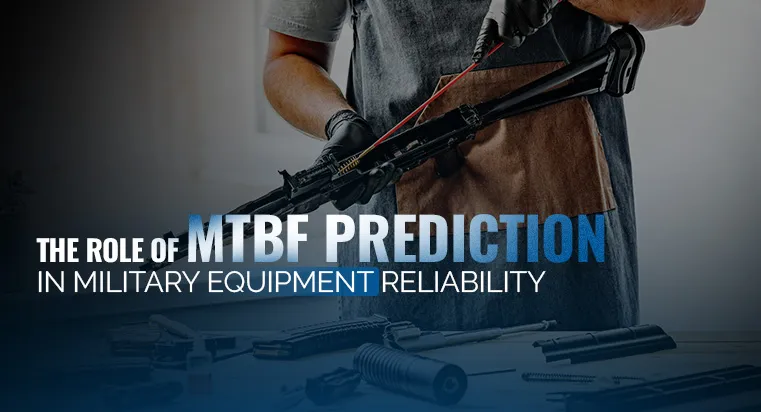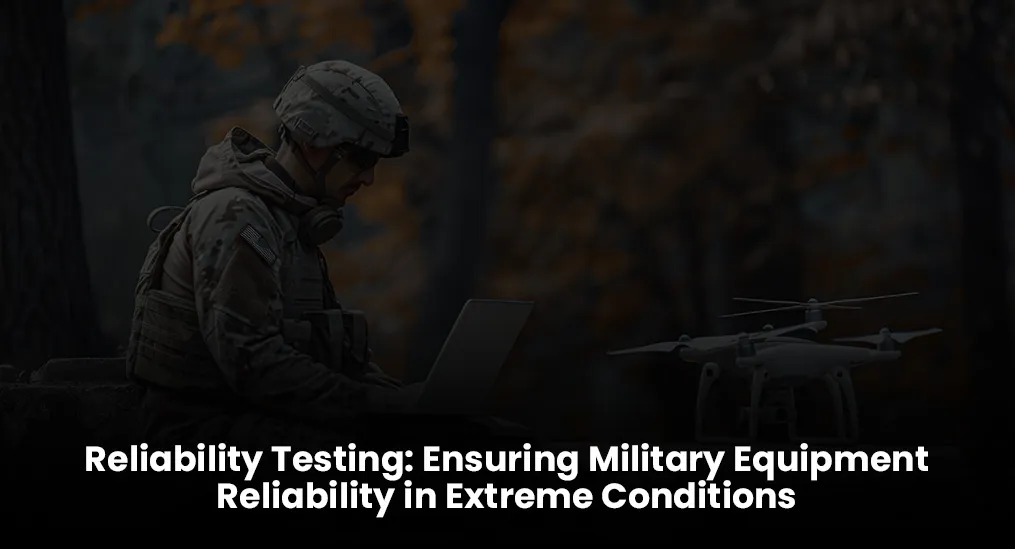Reliability Testing: Ensuring Military Equipment Reliability in Extreme Conditions
Military equipment is built to handle tough environments, but even the most advanced systems can fail during critical operations, which is why reliability testing for military systems is essential. It helps in identifying and addressing weaknesses before equipment is deployed. Ensuring that the military only has technologies and equipment that perform well, under extreme pressure.
For engineers, military contractors, and anyone involved in the design or maintenance of military systems, understanding the importance of reliability testing is key. It guarantees that your equipment will perform when it matters most.

Military Standard Testing Projects
Military standard testing answers this one critical question: “Will the equipment work in harsh conditions? Answering will the equipment hold up over time, even in the most demanding situations.
Engineers have developed specific tests to find weaknesses and ensure that systems and equipment can handle stress beyond basic functionality.
Environmental Testing
Environmental testing examines how military equipment performs under extreme conditions, which is part of the larger framework of reliability testing for military systems. This includes temperature changes, moisture, humidity, and exposure to corrosive elements like salt. The test identifies weaknesses in materials or components. Military standards for reliability testing are followed during environmental testing to ensure that military equipment can withstand a range of extreme conditions without failure. It ensures equipment can handle tough conditions without failure. This test is necessary for equipment used in extreme climates, particularly for vehicles, communication systems, and portable electronics.
Detailed Testing Procedures:
- Temperature Simulation: The system is placed in a chamber where the temperature is raised and lowered to test its reaction to extreme heat and cold.
- Thermal Cycling: Materials are heated and cooled quickly to check if they crack or show signs of damage.
- Corrosion Testing: Parts are exposed to a salt-spray chamber, simulating wet or salty environments to test for corrosion.
- Moisture Testing: The system is placed in a humidity chamber to assess how it holds up in high-moisture conditions.
- Pressure and Altitude Testing: A vacuum chamber is used to simulate high-altitude conditions and pressure differences.
Mechanical Testing
Mechanical testing looks at how military equipment withstands physical stress, such as vibrations, impacts, and shock. The equipment is subjected to conditions simulating real-world stress, such as transportation or combat. Military product testing in mechanical environments helps determine how well military systems hold up to physical stress, ensuring military equipment reliability during transport or field operations. This testing is important for vehicles, weapons, and electronics that may face physical stress during transport or in the field.
Detailed Testing Procedures:
- Vibration Testing: The system is placed on a vibration table and subjected to different frequencies to check how it holds up under physical stress.
- Shock Testing: The system is dropped or impacted to test its durability during rough handling or transportation.
- Fatigue Testing: Repeated stress is applied to simulate long-term use and check how the parts hold up.
- Impact Testing: Controlled impacts are applied to check how the system responds to sudden forces.
- Torque Testing: A rotational force is applied to test how well components resist twisting or bending.
Electromagnetic Testing
Electromagnetic testing checks how military equipment works in environments with electromagnetic interference. It ensures the equipment does not interfere with other systems and can resist electromagnetic pulses (EMPs). Reliability engineering for defense systems ensures that electromagnetic compatibility testing meets military standards, helping to safeguard communication and navigation equipment from external interference. This test is crucial for communication systems, radar, and navigation equipment to ensure mission success.
Detailed Testing Procedures:
- Electromagnetic Compatibility (EMC) Testing: The system is tested in an EMC chamber to ensure it does not interfere with other devices.
- Shielding Effectiveness Testing: Parts are placed in a shielded enclosure to check how well they block external electromagnetic interference.
- Electromagnetic Pulse (EMP) Testing: The system is exposed to EMPs to check if it can withstand the effects of a pulse.
- Conducted Immunity Testing: Electrical surges, like those caused by lightning, are applied to test how well the system resists electrical disturbances.
Endurance Testing
Endurance testing evaluates how military equipment performs over long periods. The equipment is run continuously under normal or extreme conditions. This helps identify how components like batteries, seals, and gears hold up after extended use. This testing is important for equipment that must operate for long periods without failure, such as surveillance systems, power generators, and vehicles.
Detailed Testing Procedures:
- Continuous Operation Testing: The system runs for an extended period to simulate long-term use and assess its performance.
- Wear and Tear Simulation: Critical components, like gears and seals, are stressed continuously to check for signs of wear or failure.
- Life Cycle Testing: The system undergoes accelerated testing to simulate years of use in a short time.
- High-Demand Testing: The system is pushed to its limits with heavy usage to check its durability under stress.
These rigorous tests are essential for defense contractors and engineers, providing the assurance that their products meet the reliability standards required for unpredictable and demanding environments through reliability testing for military systems. Military standard testing is the foundation that guarantees equipment stays functional, no matter the challenge.
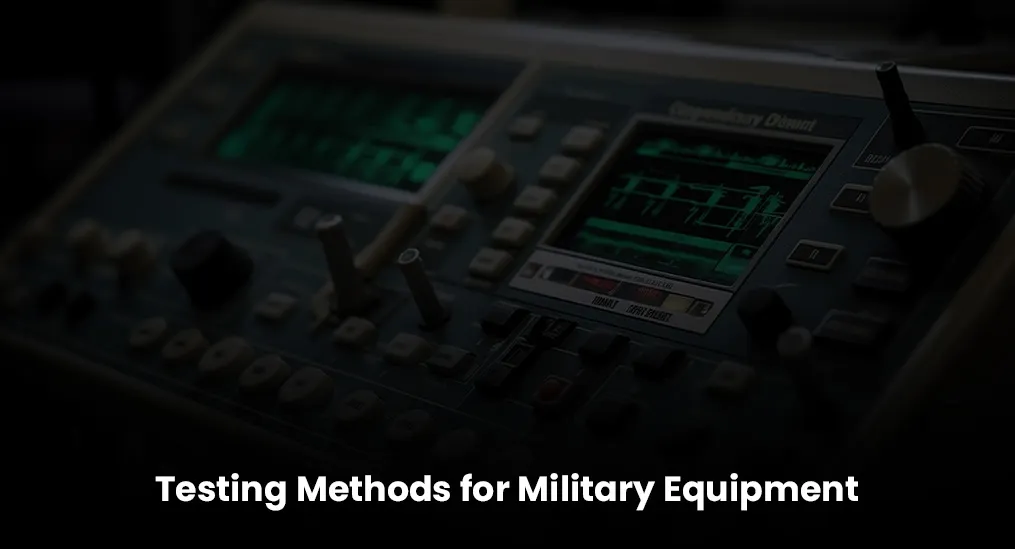
Testing Methods for Military Equipment
- Accelerated Life Testing: This method simulates years of use in a short period. It exposes equipment to harsh conditions to predict its lifespan and reliability in the field.
- HALT and HASS Testing: HALT is done during the design phase. It pushes prototypes to their limits to identify failure points early. Once the equipment is in production, HASS ensures that defects in manufacturing are caught before the product is finished.
- Thermal and Mechanical Stress Testing: This test subjects equipment to extreme temperatures and mechanical stress. It checks how materials and components hold up under these conditions.
- Functional Testing: This test makes sure the equipment’s critical features—like sensors, communication tools, and navigation systems—work properly in tough environments.
These methods provide engineers with valuable data. They ensure military systems meet reliability standards, so they can function when needed most.
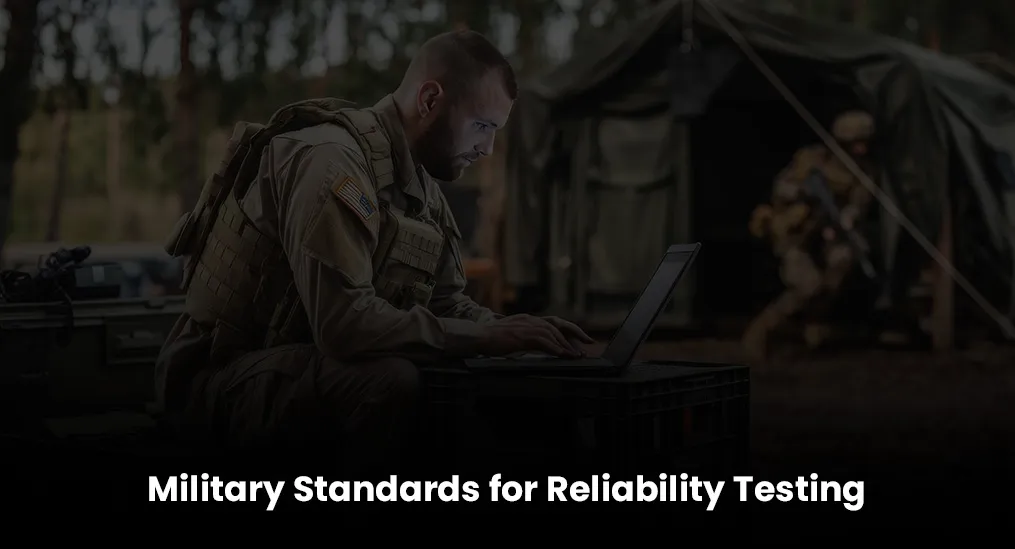
Military Standards for Reliability Testing
The U.S. Department of Defense (DoD) sets strict standards for reliability testing to ensure military systems perform and last. These standards define requirements for environmental conditions, operational needs, and performance during testing.
Some of the key military standards for reliability testing include:
- MIL-STD-810: The most common standard for environmental testing, covering temperature, humidity, vibration, and other factors.
- MIL-STD-883: This standard focuses on testing microelectronic devices used in military systems.
- MIL-STD-461: This standard ensures electromagnetic compatibility. It prevents interference and protects against external electromagnetic forces.
- MIL-STD-1540: This standard applies to the reliability of complex systems and is used for the qualification and acceptance of military equipment.
Following these standards ensures that military systems can handle the challenges of real-world operations. Compliance is key to developing reliable and durable defense systems.
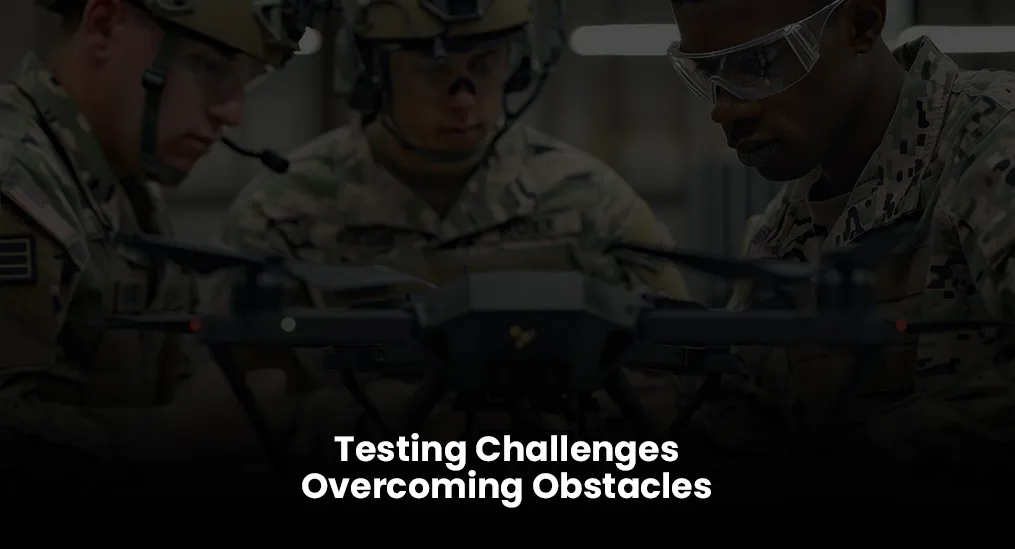
Testing Challenges: Overcoming Obstacles
Military reliability testing faces several challenges. One key issue is that real-world environments are unpredictable. Testing equipment in controlled settings can’t fully replicate battlefield conditions. Budget constraints also limit testing methods. Tests need to balance thoroughness with efficiency. Additionally, accessing military systems or deploying them in difficult environments can be logistically challenging.
Despite these challenges, engineers ensure that systems are tested as thoroughly as possible. The goal is to make military equipment as reliable as possible before deployment.

Final Thoughts: The Future of Military Equipment Reliability
Reliability testing for military systems is a critical part of military equipment design. It ensures that systems can handle extreme conditions, like those found on the battlefield. Testing methods such as environmental, mechanical, electromagnetic, and endurance testing help engineers find and fix weaknesses before deployment. Following military standards, such as MIL-STD-810 and MIL-STD-461, ensures equipment will perform as expected when it is needed most.
The key point is simple: reliability testing ensures that military equipment will work in tough environments. It’s not optional—it’s essential for mission success. With advancements in reliability engineering for defense systems and adherence to military standards for reliability testing, the future of military equipment reliability looks promising.
If you are involved in military systems design or engineering, make sure you prioritize these tests. They are necessary to meet the required standards for reliability. If you have thoughts or experiences on military testing, feel free to share them in the comments.
In military operations, failure is not an option. Ask yourself: will your equipment stand up to the test when it matters?

Ben Chilwell
Proin eget tortor risus. Curabitur aliquet quam id dui posuere blandit. Vivamus suscipit tortor eget felis porttitor volutpat.

Ben Chilwell
Proin eget tortor risus. Curabitur aliquet quam id dui posuere blandit. Vivamus suscipit tortor eget felis porttitor volutpat.
Related Posts

Strengthening Military Technology: The Importance of Reliability Consulting
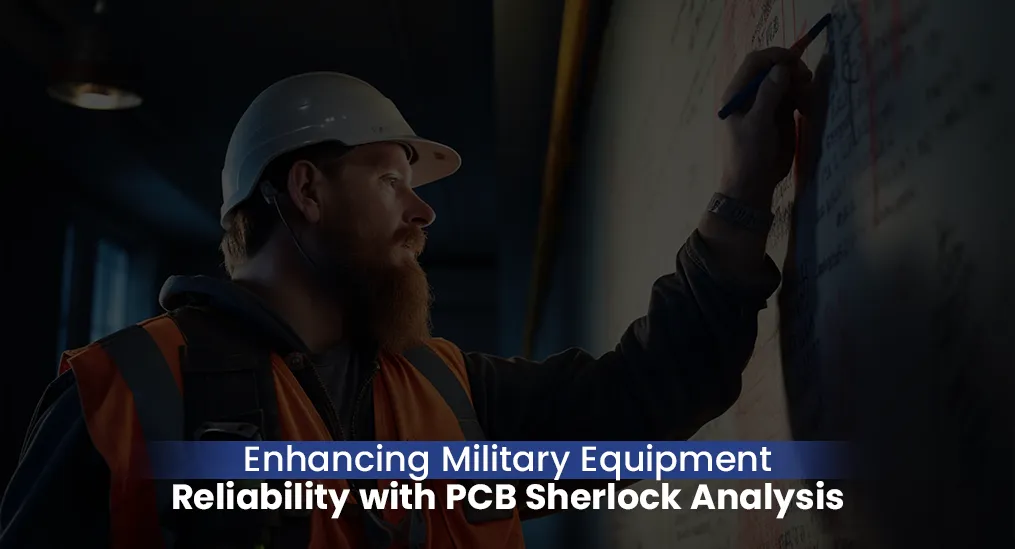
Enhancing Military Electronics Reliability with PCB Sherlock Analysis
